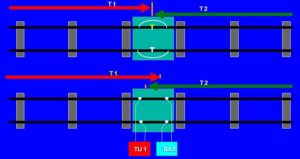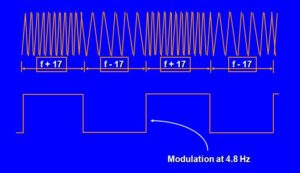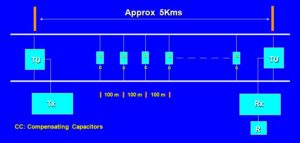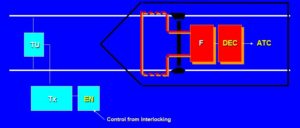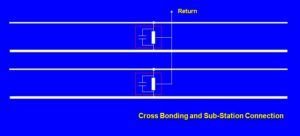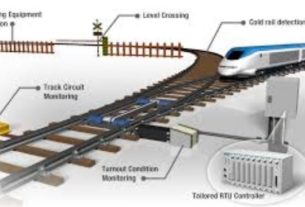Railway Audio frequency jointless track circuit
Railway Audio frequency jointless track circuit – Why AFTC?
- Jointless
- Immune to traction voltages
- Long length
- Both rails available for traction currents
- Broken Rail Detection in both rails
- Superior Train Shunt Detection
End fed track circuit
Operating frequencies
Principle of operation
“Electronic” separation joint
TI21 Transmitter
Transmitter waveform
TI21 Receiver
Rail to rail audio frequency voltage
Train Shunt
Interface with non-track circuited line
Terminating with other TC’s
Safety
Design based on the following assumptions:
- Value of resistance can increase but not decrease
- Capacitors can fail – open circuit, short circuit, or leak
- Semi-conductors can fail – open circuit, short circuit, or leak at any or all of the terminals
Transformers will provide reliable DC isolation
Safety in Transmitter & TU
- Oscillator fails to oscillate, fails to modulate, oscillates at wrong frequency – will be detected by the receiver or the tuning unit
- Component failure in the tuning unit (TU) – will lead to a reduction in voltage to the receiver so that the output relay drops
Safety in Receiver
- Receiver sensitive only to its own frequency
- Failure of components will not lead to an increase in receiver gain
- Receiver gain does not increase with the increase in power supply voltage
- Receiver immunity to interference not jeopardized by component failure
Intermediate Receiver
Increasing Track Circuit Length by Addition of Compensating Capacitors
Coded Track Circuit (AFTC) for Automatic Train Control
Use of Line Matching Units (LMU’s) for Remote Housing of Active Units
Impedance Bond
- Equalizes the rail current
- Limits the rail to rail voltage
- Makes available both rails for traction return current
- Provides means to connect return sub-station conductors
Impedance Bond
Allocation of Track Circuit Frequencies For 4 Lines (Eight Channels A to H)
Railway Audio frequency jointless track circuit Test Instruments
- General instruments
- Frequency selective voltage meter
- Shunt box
TI21 in Automatic Signalling
- Safe & efficient Train Detection for all types of traction territory
- Efficient utilization of costly assets
- Increased line capacity particularly for mixed traffic
- Increased safety – fewer accidents from human error
- Automatic road barrier control
- Coding can be added later when ATP introduced
- Immune from effects of 3 phase traction systems
Audio frequency track circuit ppt
Alstom audio frequency track circuit
Railway Audio frequency jointless track circuit



